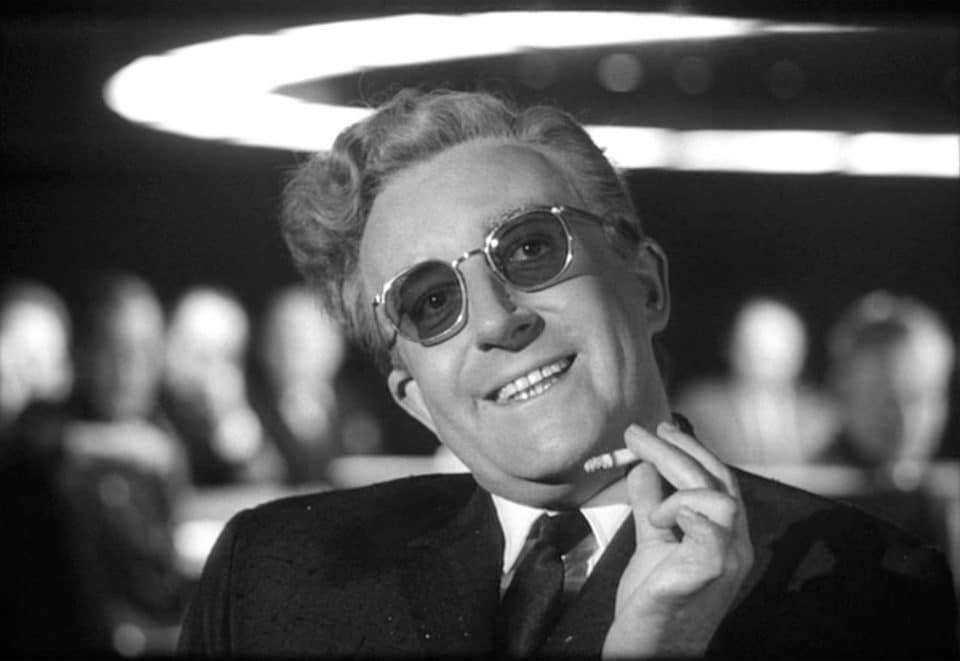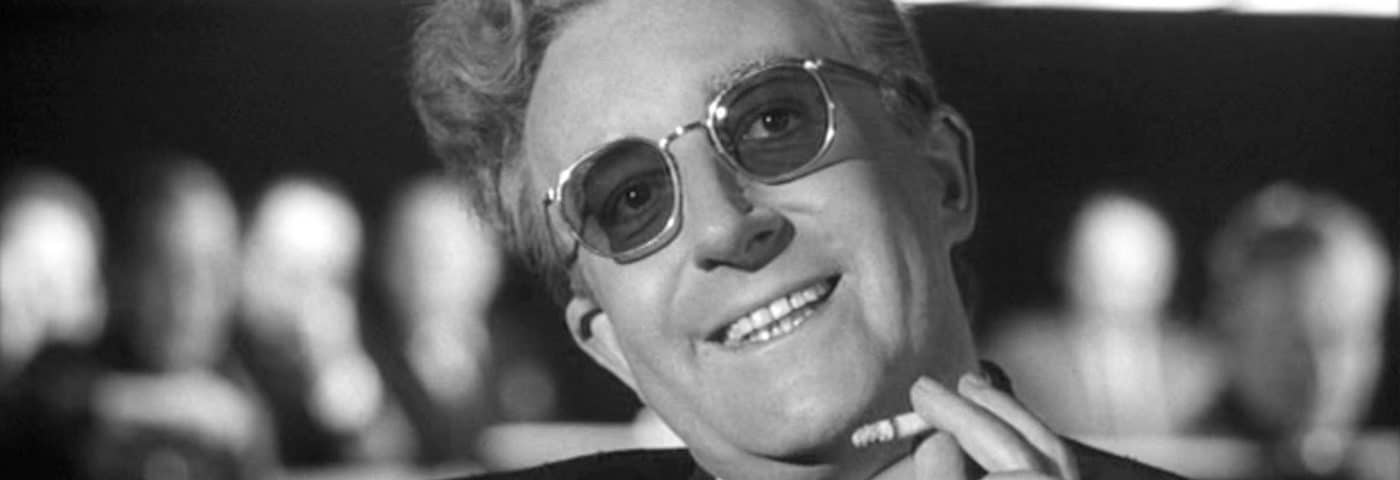It’s hard to write about Stanley Kubrick’s Dr. Strangelove or: How I Learned to Stop Worrying and Love the Bomb (1964) without resorting to superlatives. It’s the best comedy of the 1960s. It’s the best black comedy ever. It has the longest title of any Oscar-nominated film. Just as Kubrick’s 2001: A Space Odyssey (1968) redefined optimism about the future possibilities of technology, Dr. Strangelove redefined pessimism about the current limitations of technology. In both films, technology is seen as an extension of human nature.
Kubrick started out to make a thriller about an accidental nuclear attack. But as he adapted Peter George’s novel Red Alert for the screen, he saw the comic potential in many of the scenes. He brought in Terry Southern to help turn the project into a dark satire bordering on farce. Kubrick and Southern conceived a very different ending. The story was to conclude with a giant food fight in the war room (look for a large food table in the background near the end of the movie). The characters would have thrown pies at each other in a visual reductio ad absurdum (Latin for “reduction to the absurd”). Kubrick went so far as to actually shoot that ending, though only stills from it survive today.
Peter Sellers plays three parts in the movie: Group Captain Lionel Mandrake, President Merkin Muffley, and Dr. Strangelove. Sellers was originally slated to play a fourth part, that of Major T. J. ‘King’ Kong. Kubrick wanted to show the same personality was present at every stage of the process, from the President ordering a bombing to an airman personally delivering the bomb. Sellers was finding it hard to get the Texas accent right for the Major, so when he broke his leg about the same time, Kubrick decided to cast Slim Pickens for the role.
Kubrick had planned to premiere the film in December 1963, but delayed the opening because of the November 22 assassination of President Kennedy. Following his list of the contents in the survival pack, Major Kong says, “a fella could have a pretty good weekend in Vegas with all that stuff.” Pickens had originally mentioned “Dallas” as the city, but Kubrick had him dub in “Vegas” so as not to remind the audience of the assassination.
(Criterion’s Blu-ray edition includes the documentary No Fighting in the War Room, as one of the supplements.)
Dr. Strangelove or: How I Learned to Stop Worrying and Love the Bomb
(1964; directed by Stanley Kubrick; cable, dvd, and blu-ray)
Criterion Collections
List Price: $39.95 (Blu-ray), $29.95 (DVD)
Saturday, May 11 at 6:15 p.m. eastern on Turner Classic Movies
I first posted this article here at my Classic Film Review website.

